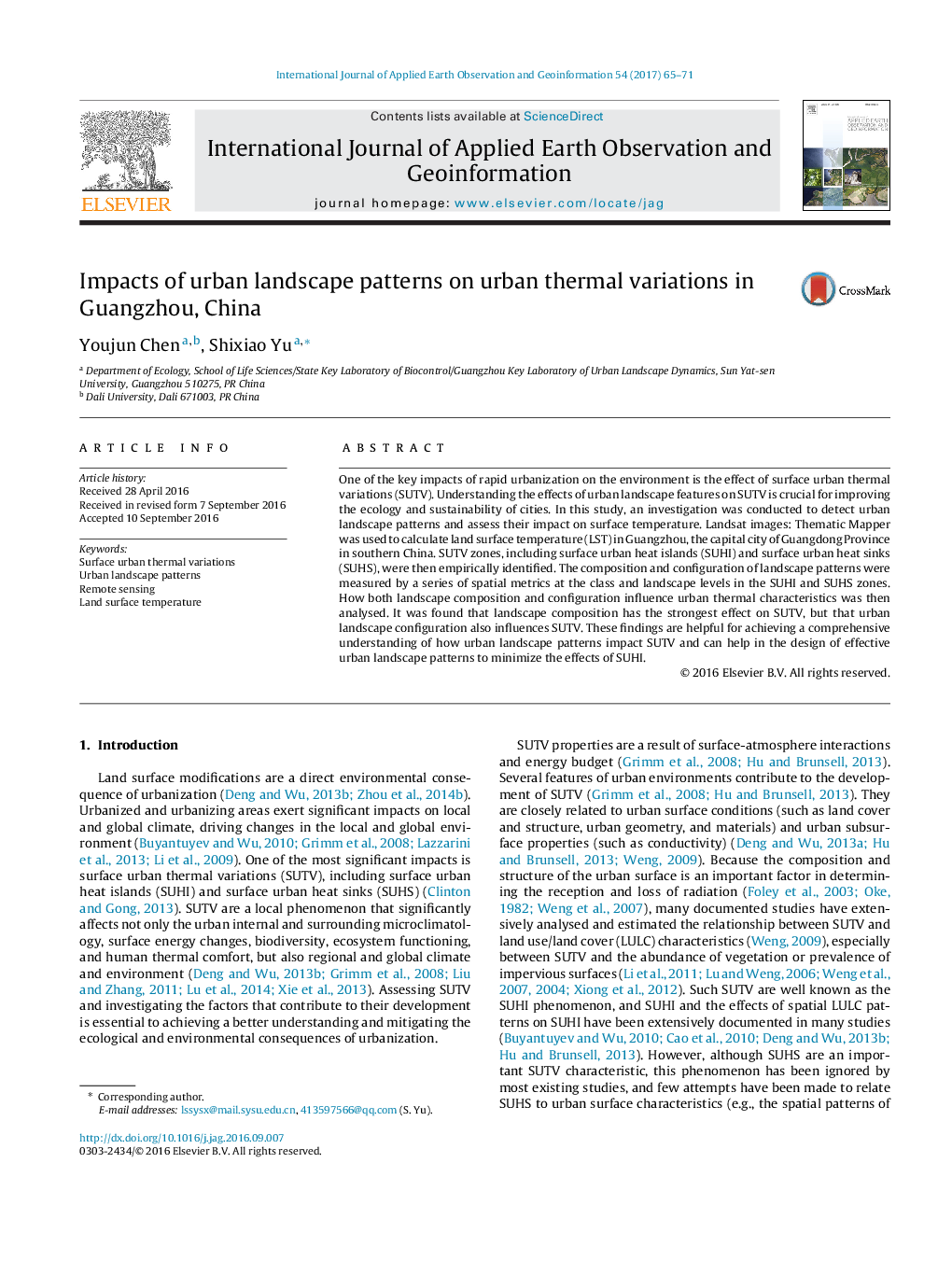| Article ID | Journal | Published Year | Pages | File Type |
|---|---|---|---|---|
| 6348425 | International Journal of Applied Earth Observation and Geoinformation | 2017 | 7 Pages |
Abstract
One of the key impacts of rapid urbanization on the environment is the effect of surface urban thermal variations (SUTV). Understanding the effects of urban landscape features on SUTV is crucial for improving the ecology and sustainability of cities. In this study, an investigation was conducted to detect urban landscape patterns and assess their impact on surface temperature. Landsat images: Thematic Mapper was used to calculate land surface temperature (LST) in Guangzhou, the capital city of Guangdong Province in southern China. SUTV zones, including surface urban heat islands (SUHI) and surface urban heat sinks (SUHS), were then empirically identified. The composition and configuration of landscape patterns were measured by a series of spatial metrics at the class and landscape levels in the SUHI and SUHS zones. How both landscape composition and configuration influence urban thermal characteristics was then analysed. It was found that landscape composition has the strongest effect on SUTV, but that urban landscape configuration also influences SUTV. These findings are helpful for achieving a comprehensive understanding of how urban landscape patterns impact SUTV and can help in the design of effective urban landscape patterns to minimize the effects of SUHI.
Related Topics
Physical Sciences and Engineering
Earth and Planetary Sciences
Computers in Earth Sciences
Authors
Youjun Chen, Shixiao Yu,
